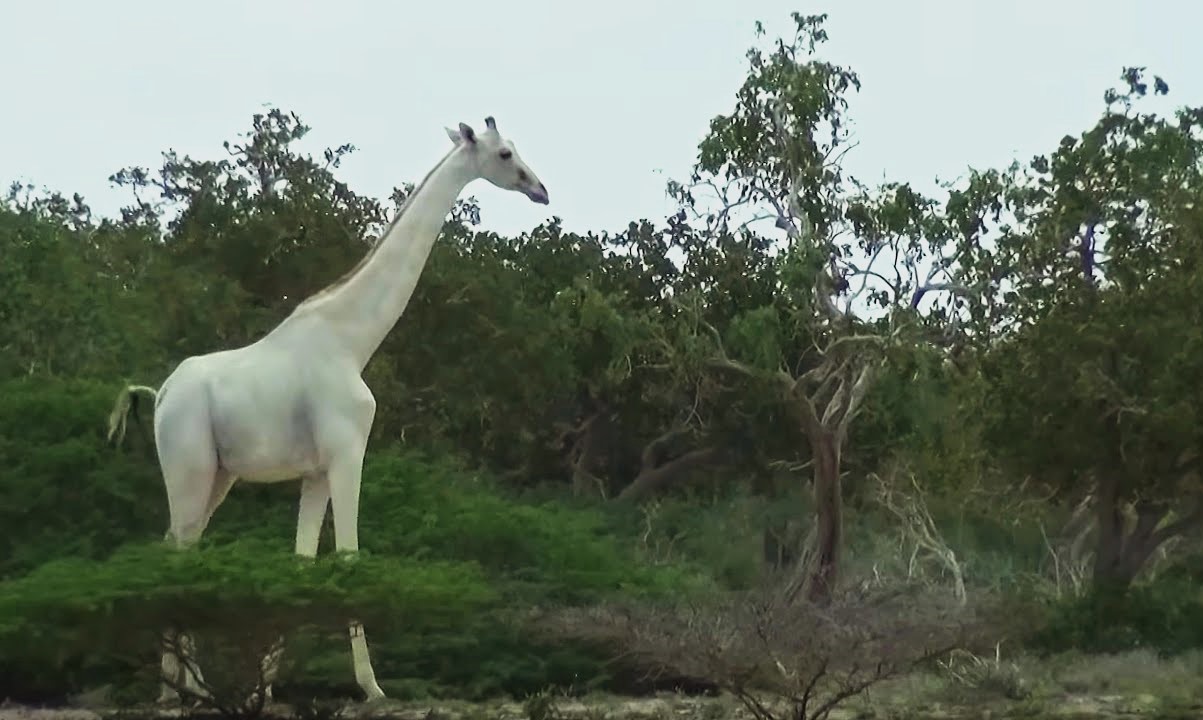
Why do poachers kill white giraffes? Poachers target these rare animals for their unique appearance. White giraffes, often mistaken for albinos, actually have a condition called leucism, which causes partial loss of pigmentation. This makes them stand out, attracting illegal hunters. Their skin and body parts are highly valued in black markets for their supposed medicinal properties and as exotic trophies. Conservationists are deeply concerned because these giraffes are incredibly rare, with only a few known to exist. Protecting them is crucial for biodiversity and the survival of unique genetic traits. Understanding the reasons behind poaching can help in creating effective measures to safeguard these majestic creatures.
Key Takeaways:
- The tragic killing of rare white giraffes by poachers has sparked global outrage and highlighted the urgent need for better protection and conservation efforts.
- Local communities and global organizations are working together to raise awareness, increase security measures, and advocate for the survival of white giraffes and biodiversity.
The Tragic Incident
In recent years, the world has witnessed a heartbreaking event involving the rare white giraffes. Poachers have targeted these unique creatures, leading to a significant loss in their population. Here are some crucial facts about this tragic incident.
-
White giraffes are not albino. They have a condition called leucism, which causes partial loss of pigmentation in their skin.
-
The first white giraffe was spotted in Kenya in 2016. This sighting brought global attention to these rare animals.
-
Only three white giraffes were known to exist before the poaching incident. This made them incredibly rare and valuable.
-
In March 2020, poachers killed two of the three known white giraffes. This included a female and her calf.
-
The remaining white giraffe is a lone male. He is now the last known white giraffe in the world.
The Impact on Conservation Efforts
The killing of these white giraffes has had a profound impact on conservation efforts. It has highlighted the urgent need for better protection and awareness.
-
The white giraffes were part of a community conservancy in Kenya. This conservancy aimed to protect wildlife and promote eco-tourism.
-
The poaching incident has led to increased security measures. Rangers now patrol the area more frequently to prevent further losses.
-
Conservationists are using technology to monitor the remaining white giraffe. GPS tracking devices help keep tabs on his movements and ensure his safety.
-
The incident has sparked global outrage. Many people have called for stricter laws and harsher penalties for poachers.
-
Increased funding for conservation programs has been a positive outcome. Donations and support have poured in from around the world.
The Unique Characteristics of White Giraffes
White giraffes are not just rare; they are also fascinating creatures with unique characteristics. Understanding these traits can help in their conservation.
-
Leucism affects the skin but not the eyes. Unlike albino animals, white giraffes have normal-colored eyes.
-
Their white color makes them more vulnerable to predators. They lack the natural camouflage that other giraffes have.
-
White giraffes have the same diet as regular giraffes. They primarily eat leaves, fruits, and flowers from tall trees.
-
Despite their unique color, white giraffes behave similarly to other giraffes. They have the same social structures and mating behaviors.
-
The white giraffe's rarity makes it a target for poachers. Their unique appearance makes them highly sought after for illegal wildlife trade.
The Role of Local Communities
Local communities play a crucial role in protecting white giraffes. Their involvement is essential for the success of conservation efforts.
-
Community conservancies are vital for wildlife protection. They provide a safe habitat for endangered species like the white giraffe.
-
Education programs help raise awareness about the importance of conservation. Local schools and community centers teach people about protecting wildlife.
-
Eco-tourism provides an alternative source of income. By promoting tourism, communities can benefit financially without harming wildlife.
-
Local rangers are often the first line of defense against poachers. They know the land and the animals, making them effective protectors.
-
Community involvement fosters a sense of ownership. When people feel responsible for their local wildlife, they are more likely to protect it.
Global Efforts and Awareness
The plight of the white giraffes has garnered international attention. Global efforts are now focused on preventing further losses and protecting these rare animals.
-
International organizations have joined the fight against poaching. Groups like the World Wildlife Fund (WWF) provide support and resources.
-
Social media campaigns have raised awareness. Hashtags like #SaveTheWhiteGiraffes have gone viral, spreading the message worldwide.
-
Celebrities and influencers have used their platforms to advocate for conservation. Their involvement has brought more attention to the cause.
-
Documentaries and news reports have highlighted the issue. These media pieces educate the public and encourage action.
-
International laws and agreements aim to protect endangered species. Treaties like CITES regulate the trade of wildlife and their products.
The Future of White Giraffes
The future of white giraffes remains uncertain. However, ongoing efforts provide hope for their survival and protection.
-
Breeding programs could help increase their population. By carefully managing breeding, conservationists hope to produce more white giraffes.
-
Genetic research is being conducted to understand leucism. This research could provide insights into how to protect and conserve white giraffes.
-
Habitat restoration projects aim to create safe environments. By restoring natural habitats, conservationists can provide better protection for wildlife.
-
Collaboration between governments and NGOs is crucial. Working together, they can create effective strategies for conservation.
-
Public support remains essential. Continued awareness and advocacy can help ensure the survival of white giraffes.
The Importance of Protecting Biodiversity
Protecting white giraffes is part of a larger effort to preserve biodiversity. Every species plays a role in the ecosystem, and their loss can have far-reaching consequences.
-
Biodiversity supports ecosystem stability. Different species contribute to the balance and health of their environment.
-
Protecting one species can benefit others. Efforts to save white giraffes also help other animals in their habitat.
-
Biodiversity provides resources for humans. Many medicines, foods, and materials come from diverse ecosystems.
-
Healthy ecosystems support human well-being. Clean air, water, and fertile soil are all products of a balanced environment.
-
Every species has intrinsic value. White giraffes, like all animals, deserve protection simply because they exist.
The Final Word on White Giraffes
White giraffes, with their rare beauty, face a grim reality due to poaching. These majestic creatures, known for their unique leucistic condition, have become prime targets. Poachers kill them for their skin, which is believed to hold mystical properties. This senseless act not only threatens the survival of white giraffes but also disrupts the delicate balance of their ecosystems.
Conservation efforts are crucial. Protecting these animals involves stricter laws, increased patrolling, and raising awareness about their plight. Communities living near giraffe habitats play a vital role in these efforts. By educating locals and involving them in conservation, we can create a safer environment for white giraffes.
Every action counts. Supporting organizations dedicated to wildlife protection and spreading the word about the dangers of poaching can make a difference. Let's work together to ensure these magnificent creatures continue to grace our planet.
Frequently Asked Questions
Was this page helpful?
Our commitment to delivering trustworthy and engaging content is at the heart of what we do. Each fact on our site is contributed by real users like you, bringing a wealth of diverse insights and information. To ensure the highest standards of accuracy and reliability, our dedicated editors meticulously review each submission. This process guarantees that the facts we share are not only fascinating but also credible. Trust in our commitment to quality and authenticity as you explore and learn with us.


